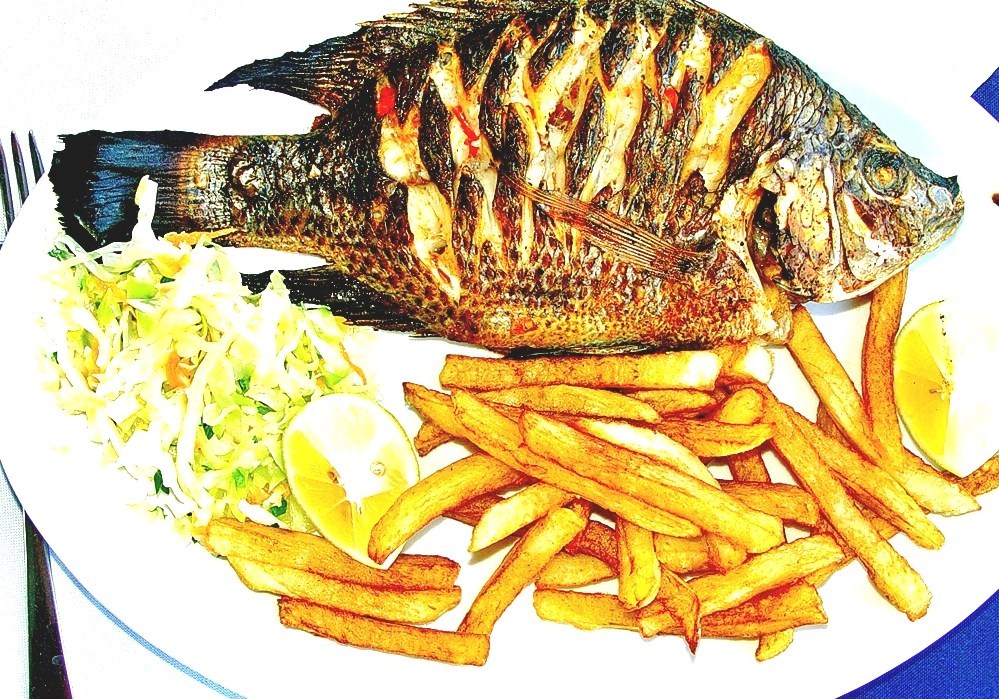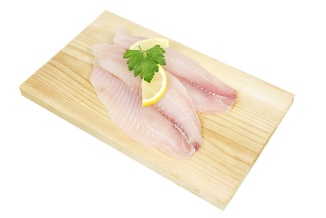

galilaea became lean, especially the age-0 group. During the autumn months, there was hardly any length increment, and all T. However, only a small proportion of age-1 fish reached marketable size by July, when their food supply began to diminish. The highest growth rates for age-1 T, galilaea, 1–2% mean weight per day, occurred in April and May, the Peridinium season. Recruitment to the fishery, at 17–20cm, occurred between ages l+and3+. Yearly fluctuations in size distribution were attributed to changes in the proportions of fast- and slow-growers, as well as in the abundance of year-classes. First year's growth, 23–152mm, was closely related to final length, which appeared to be affected by genetic variation in the population.

The Von Bertalanffy growth coefficient ( K) was estimated at 0.67, and final length (L∞) at 25–36cm total length.

Three broods hatched in years of relatively high water levels (1970, 19) yielded especially low recruitment. Assuming a natural mortality ( M) of 0.94, total stock size averaged 300–700 tonnes in that period, while recruitment averaged < 0.7–3 million per year. Total yearly mortality ( Z) was estimated at 1.84 between 19. While chromosomal and quantitative DNA changes accompanied phyletic evolution in the six cichlids, there is no evidence that these modifications were associated with speciation.Between 19, catches of Tilapia galilaea in Lake Kinneret fell from an annual average of about 200 tonnes to a low of 70 tonnes in 1974, and then returned to their former level. Since the quantity and distribution of constitutive heterochromatin was the same in both species, it is suggested that the 'extra' DNA may be distributed interstitially throughout the genome. aureus possessed approximately 15% more nuclear DNA than S. simonis, but differed significantly within Sarotherodon. Among closely related taxa, DNA was equivalent in Tr. The quantity of DNA from erythrocyte nuclei varied significantly among the six species. zillii (IN = 0.49) which lacked conspicuous centromeric heterochromatin in 10 to 12 chromosomes. Differentiation in C-banding was noted between these species and the related tilapine T. Monogenea, Gyrodactylus, tilapia, Oreochromis niloticus niloticus. In both species, constitutive heterochromatin occurred in the centromeric region of all chromosomes and in the short arms of some submetacentrics. with pronounced ventral bar processes collected from two populations of Mexican O. galilaeus were indistinguishable with general cytological stains. Within Tristramella, the two very closely related species (IN = 0.95) displayed gross karyotypic similarity. More detailed cytological analysis in some species revealed nucleolus-organizer regions and the presence of chromosome associations. Only Haplochromis flaviijosephi contained distinct metacentric chromosomes. 1, relative frequency and nature of submetacentrics, and distribution of C-bands (constitutive heterochromatin). Differentiation included variation in the length of chromosome no. While cytological differentiation was minimal, some changes in chromosomal morphology were noted among genera. Diploid chromosome number was 44 in all fishes. Electrophoretic similarity ranged from IN = 0.25 to IN = 0.95 and closely approximated formal taxonomic relationships among these species. Estimates of electrophoretic similarity at 21 isozyme loci provided a temporal framework used to evaluate genetic changes. All six species are reproductively isolated from each other. galilaeus, and Tilapia zillii) and restricted Middle Eastern endemics (Haplochromis flaviijosephi, Tristramella sacra and Tr. The studied species included sympatric representatives of widespread African taxa (Sarotherodon aureus, S. Chromosomal and biochemical differentiation were investigated among six species of Old World cichlid fishes from the Sea of Galilee, Israel.


 0 kommentar(er)
0 kommentar(er)
